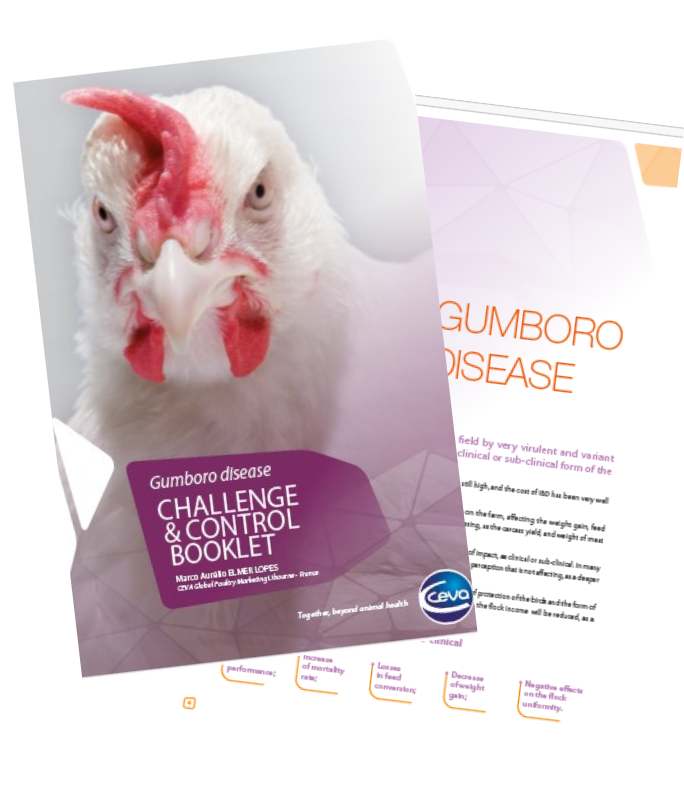Infectious Bursal Disease (IBD) also known as Gumboro disease, is a virus that penetrates the chickens through the oral route and within a few hours is detected in the macrophages and lymphoid cells of the digestive tract, including the caeca, the duodenum, the jejunum, and the liver.
How The Virus Affects The Bursa of Fabricius
Soon afterwards, the virus enters a first viraemia phase which allows it to reach its target organ, which is the bursa of Fabricius, where replication takes place. This replication is responsible for various morphological changes of the organ corresponding to various and highly variable gross and microscopic lesions. This includes a massive destruction of the B-lymphocytes, explaining the depletion of the lymphoid follicles of the bursa.
As known, the primary role of the bursa in chickens is to provide an essential microenvironment for B-lymphocytes to diversify their immunoglobulin genes by gene hyper conversion (Ívan, J et al, 2001).
The infectious bursal disease virus (IBDV) can induce transitional to irreversible damage. It will vary according to the pathogenicity of the strain.
Understanding the damage in an organ responsible for the microenvironment for B-lymphocytes is crucial when the damage occurs in the first 2 weeks of age, because it will also impact effective humoral immune response capabilities.
When the virus strain infection damage is reversible, the histological regeneration of the bursa of Fabricius will bring about a full restoration of the humoral immune functions, followed by restoration of bursal B-cell activity, and repopulation.
Observing IBD In Poultry
There are three main forms of Infectious Bursal Disease (immunosuppressive, clinical and subclinical) that will be defined by the variability of the virus, and the pathogenic consequences.
A key symptom observed in chickens is the reduction of feed and water consumption, due the morbidity caused by the process of immune response. Other related symptoms that can be observed include:
- mucoid diarrhea (viscous)
- goosebumps, and
- sleeping with their beaks touching the ground
After an incubation of 3 to 4 days, in clinical infections, the symptoms will start, with mortality usually up 20%, but with some cases of much higher mortality, depending on the virulence of the IBD virus involved. The virulence of field strains varies considerably; very virulent (vv) strains of the virus cause higher mortality and morbidity.
After the peak of the symptoms and mortality, usually around a week, the flock will recover. However broiler weight gain is delayed by 3-5 days.

Sub-clinical form impacts not just the field performance, but also can be observed in the processing of the broilers, in the slaughterhouse.
There can be an increase of condemnations, such as the rejections of livers reported in some publications. It can be explained by the fact that Gumboro subclinical infection creates the possibility of secondary opportunistic infections, as colibacillosis (Paniago et al, 2009).
A low flock uniformity reduces the performance of slaughterhouses too, as the line speed is reduced, having an adverse effect on the cost per carcass. Similarly, lower weight gain also harms the slaughterhouse's performance, as it spoils the forecast for the carcass weight.
How Gumboro Can Impact The Bottom Line
It is easy to summarise the history of Gumboro Disease by a waving curve alternating between subclinical periods and clinical periods. The presence of the sub-clinical form of the disease is obviously more difficult to monitor than when the clinical form is present. A protection failure in the face of a subclinical Gumboro outbreak can easily pass unnoticed, which is not true if the disease is clinical.
Gumboro disease can harm poultry performance in different ways depending when and how it occurs. It can affect not just the field performance, but also the slaughterhouse performance, impacting directly on the profits of the poultry production.



